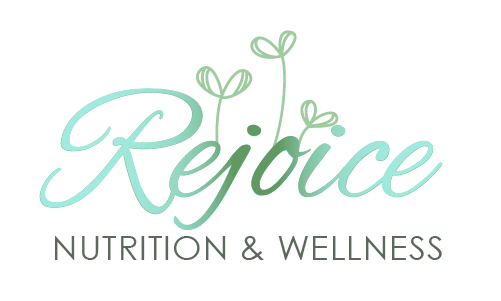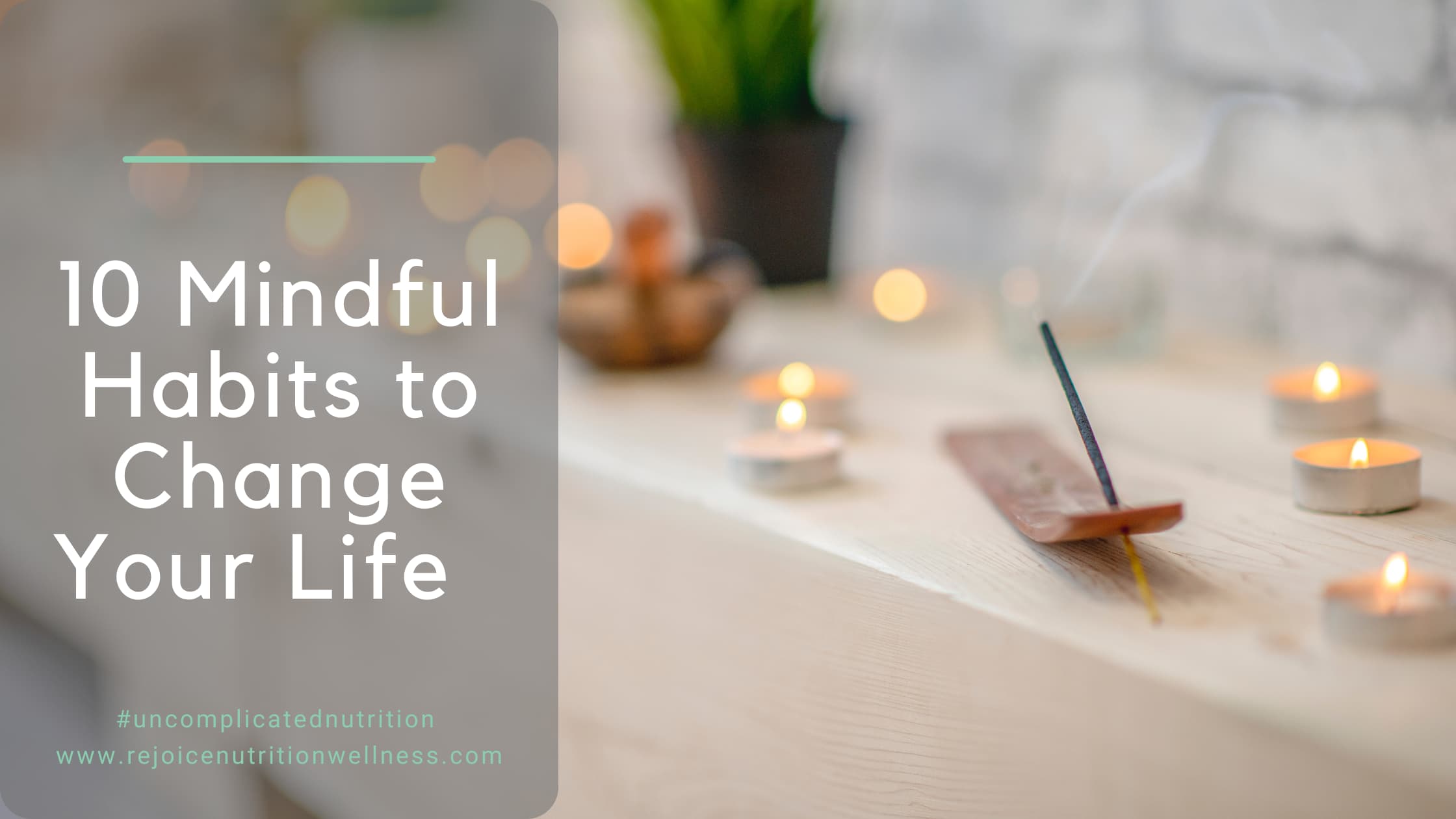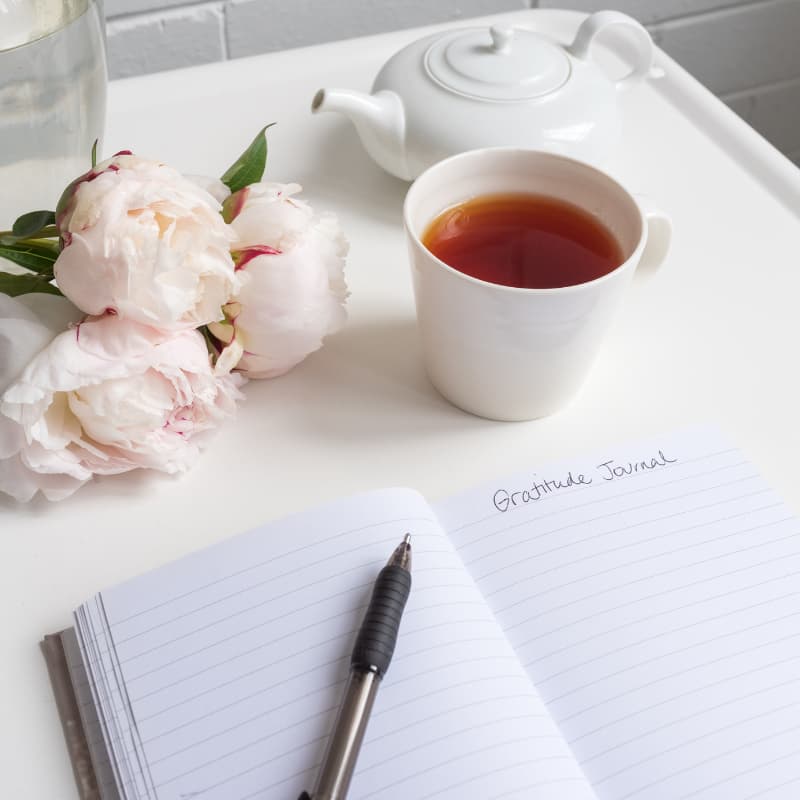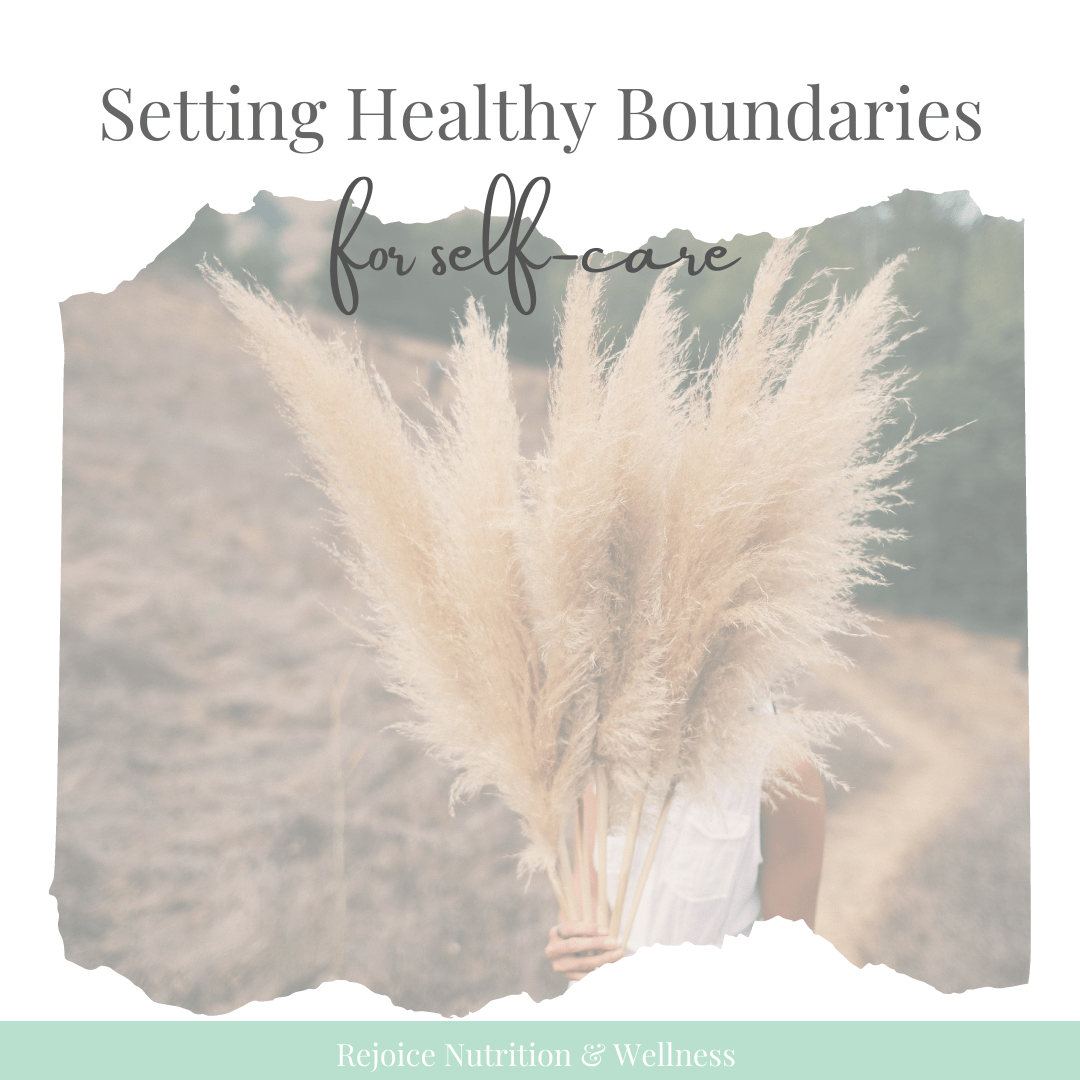2020 & well let’s face it… 2021 has been a hard year for many people for a variety of reasons. During covid, I felt a lot of pressure that I should use the time to get ahead on work, create something new, learn something new, etc. With many people showcasing the many things they were able to accomplish over covid with the “extra downtime”, I felt pressure to achieve or complete something big…. but the reality felt very different for me. I did not have creative energy during the lockdown, I found it challenging to get “motivated” to make and accomplish my ‘to-do lists, and instead I found myself focusing my energy on rest and recovery.
I found that taking time to establish an intentional relationship with my food & body became a priority. Developing and honoring healthy boundaries with social media, people around me, and within myself took center stage. Curating mindful habits that were sustainable now and as the world begins to open up and the social calendar gets busy again became a key priority.
I wanted to share 10 Mindful Habits that can support your mental, physical, and emotional self. That can honor the benefits of slowing down while the external world begins to once again move at a lightning-fast pace around us. I wanted these 10 habits to be accessible to everyone as much as possible. These 10 Mindful Habits are not intended to be an exhaustive list nor is it something you should put pressure on yourself to try and do every day. Take what works for you and approach each habit that resonates with you with compassion and kindness while you place energy into taking care of yourself
1. Give Yourself a Break:
Yup! One of the biggest Mindful Habits you can take forward with you is to give yourself a break. What do I mean by a break? This can be a mental break; a physical break or an emotional break. A break from the negative narrative in your head. A break from social media/ the news. A break from making a ‘to-do list’ every morning. A break from the feeling like the house has to be clean every day. If you are feeling overwhelmed, stop, pause, and ask yourself what can I give myself a break on today? Leaning into your capacity every day and not over exceeding it is key.
2. Add Fruits & Veggies to Your Meals
Often when we think of nutrition we think of “diets” and what we have to give up. As we let go of traditional diet culture, focus on nutrients instead of calories, and let go of labeling food ‘good’ or ‘bad’ we can simply focus on a Mindful Habit of adding nutrition to our meals instead of giving up things we love. Have toast and peanut butter for breakfast? add some berries on the side of the top toast with banana and hemp seeds. Ordering pizza? Add some veggies onto it or order a side salad with it. Think about how you can add nutrition to your day to support your body to keep you healthy and well and work your best.
3. Instead of Making Goals connect to Your “WHY”
Goal setting, intention setting, vision boarding, etc, etc. Whatever you want to call it or whatever label you add to it we can sometimes put added pressure on ourselves to achieve or accomplish certain things within a particular period and if we do not do so, we feel like we failed because we did not accomplish our goal. Now, do not get me wrong. Setting goals and intentions have power and purpose when we have the capacity for these things, the Mindful Habit takeaway here is to be kind & flexible with yourself when you set these goals.
If you make a goal of walking 10,000 steps a day for 30 days but you have a week where you emotionally are drained and 10, 000 steps feel like too much and you don’t complete your goal, it can leave you feeling like you failed. Where if you connect with your “WHY” every day. Why does this matter to you? Why is this important to you? then you might say “It is important I move every day because it helps my anxiety and helps me have a better sleep when I move”. This WHY connects with us internally on many cognitive and emotional levels which means we are more likely to achieve the outcome. The outcome does not change, it is just our growth mindset toward the outcome that shifts. It is amazing how many things we choose to do because we connect to how it makes us feel in that moment vs. “to meet a goal”.
4. Set Limits for Social Media
As someone who uses social media and virtual platforms to connect and work with my clients around the globe, I have to be very mindful of the time I spend on my phone. Taking a social media break for me means planning and being intentional about when and why I am on it. It is very easy for us to become addicted to our phones and during isolation, many people used their devices more as a way to connect to the world and stay connected to what is happening around them. However, for many, increased screen time does not always contribute to our lives in meaningful ways and can take us away from being present with those around us/ the life we have right in front of us.
Setting social media limits can be implementing mindful habits like no phones at the dinner table, no phones after a certain hour in the day, or no phones in the bedroom. You also set limits on your phone, for example, if you choose to only spend 2 hours a day on social media you can monitor this in your usage by going into:
- settings-> screen time->app usage->set time limits on certain app usages
This can be a way for those that find they spend a ton of time on social media to slowly over time be mindful of their usage and set healthy limits that align with their life, needs, and “why”.
5. Move in Ways that bring You Joy/ Serve a Function
There once was a time I moved with only the purpose to alter or change my body in a way to align with what diet culture and mainstream media told me I should look like. The exercise was a way to balance the “in/out intake of calories”, I used exercise to “work off” something I ate that was labeled “bad” or to punish myself for overindulging on the weekend. During my reeducation and exploration as a Mindful Eating Teacher and Practitioner, I discovered that movement had such a more profound meaning for me.
Choosing to move my body to:
- bring me a sense of joy
- to release tension, stress, and anxiety
- to disconnect with technology and reconnect with nature outside
- to help me feel mentally stronger
- to aid digestion
- to reduce inflammation and pain
- to help me sleep better
- to give me more energy
- etc, etc ,etc
I discover so many other reasons to add movement into my day. Again, when I had a hard day at work and I did not feel like exercising previously I would feel bad about skipping a workout. Now, on those same hard days, I will ask myself “what can I do to relieve this stress and feel better?” often the “what” is movement, and the “why” is to feel better. This mindful habit took a mindset shift and it supports me every day in so many ways to feel my best.
6. Listen
I know right?! The word listen seems almost too easy to be on this list but to actively listen to those in your life means being fully present in that moment/conversation and not busy thinking about your response or allowing your emotional reaction to something in your external world. 2020/2021 was full of emotions. Many of us felt like with so many emotions coming at us so quickly there was little time to process and digest information to thoughtfully respond and therefore we found ourselves emotionally reacting that throughout covid left many people feeling burnout and exhausted! One of the best things we can do to practice self-care and #6 on our Mindful Habits list is to simply listen.
You can listen to your friend’s problems and it is not your job to fix them or give advice. How freeing is that concept! It is not your job to take on others’ struggles nor relate their struggle to your trauma which can open old wounds for you again and only adds to your load. Listening to your partner/ family member/or friend regarding how they are feeling regarding something you have said or done instead of getting on the defense can be hard but can foster healthier relationships with yourself and others. Sometimes the best thing we can do is to be present, listen, take it in, then release it.
7. Journalling
I know, I know… I almost did not add this because it is so self-care clique of mine to have this on the wellness list. Journalling became the solution for everything over the past few years and you can buy a journal for literally every emotion, intention, or purpose in life at the book store. Because it became such a wellness trend I almost became closed off to the idea of journaling, I wanted to rebel against the picture-perfect “self-care checklists” every wellness coach posts on their Instagram feed. However, I have to admit that I fell deeply into it over the past 3 years.
Journalling is a highly personal practice. If you like to follow along with a preset journal every day to help you set attention, find joy, or practice daily gratitude then do you. If you only pull out your journal when you have a racing mind or feel trauma/ deep emotions bubbling up inside you like you are going to burst if you don’t get it out of your somehow and madly writing your thoughts out on paper feels like a therapeutic practice then do you. Maybe you have a few journals and use a combination of these methods based on how you are feeling day to day, do you?
The takeaway with journalling as a Mindful Habit is that writing down how you’re feeling can be profoundly powerful in contrast to harboring the problems of the day in your mind. Try it, find a journal or method that feels best for you.
8. Slow Down
I am not going to lie to you, I am not great at this! lol. Anyone who knows me would read this #8 habit and probably giggle at the thought of me writing this down due to the pace I historically move. Over covid, this was probably the most challenging and equally the most freeing habit I worked on with myself. I used to wake up and make a “to-do list” that was completely insane! I would chart it out in quadrants on paper
- Work to do’s (which then was divided up into my many hats to my too many jobs)
- Life to-do’s ( pay that bill, get groceries)
- Kids to do’s (order kids’ school photos, buy new indoor shoes for Monday, send a snack for Friday)
- House to-do’s (wash all floors, vacuum, laundry, etc)
- Other (those nagging things that you need to get to, take the dog to the groomers)
The truth is I could easily have 30-40 items on that list and would work at highlighting everything one by one-off. If I did not get it all done then I had to move it to the next day and felt somehow like I failed. Can you relate?
I stopped making lists like this and if I needed to jot things down I never allowed more than 10 things on the paper. I got realistic (“clean the entire house” with an expectation of perfection when I have 3 jobs and 2 busy kids was an unrealistic expectation and I was always setting myself up for failure and burnout. This is a practice in practice, I get better at it every day, I still will catch myself with old-school perfectionist tendencies, and then I am kind and patient with myself while I gently guide myself back to a place of slowing down. This allows me to honor time with myself to work on the other mindful practices that add value and joy to my days.
9. Play
Do you make time to play? to have fun? I had to relearn this. Since I had to-lists that were so long every day, I felt buried and like I was treading water to just keep up. I did not have “extra time” for things like playing and fun. I was on the go-go ride and was trapped in the daily grind. Again, with a forced shutdown came some hard truths for me. Play? where did it go? have we forgotten its value? have we forgotten how to play?
What happened to moving throughout our lives around with a sense of wild and untamed freedom we once felt as children? Going out for fun and being silly instead of only going out for a sense of obligation. A mindful habit that will improve your life is introducing a lot more fun into your life. What this looks like is unique to each one of us (singing, dancing, creative outlets you love, etc). Find ways lovely to let your hair down and be open to inviting fun back into your life.
10. Setting Healthy Boundaries
Boom! I had to make this one #10 on our Mindful Habits list. Not only was this a work in progress for me but this is by far one of the biggest barriers that my clients come to work with me for. We give so much of ourselves to other people and things that don’t always give us the same in return. These are one-sided relationships where you are always giving from your cup but your cup is not being refilled in the same way. I talk with my clients about ‘energy currency, if you are giving XYZ amounts of energy into a thing/person every day, all you got, but in return you feel like you maybe occasionally only get X…. then it’s time for some healthy boundaries.
Each of us has a set of boundaries that we know serve u, but many people find they rarely implement them or hold their ground when the boundaries are truly being tested. Ask yourself some clarifying questions to support you in establishing these boundaries:
- Are there certain topics of conversation that you no longer are willing to engage in because you feel they are emotionally triggering? Tell the person who is talking about it.
- Are there times of the day you don’t want to be answering emails? Set up an automatic really for those hours.
- Are there certain behaviors from those in your life you aren’t willing to tolerate anymore? Make it Clear.
Think about the boundaries you would want to set as a mindful habit to support your emotional, mental and physical wellness and make them your reality. Still, need some more help? I have a FREE download below to help you set boundaries that resonate with you and being practicing this mindful habit to feel your best.











